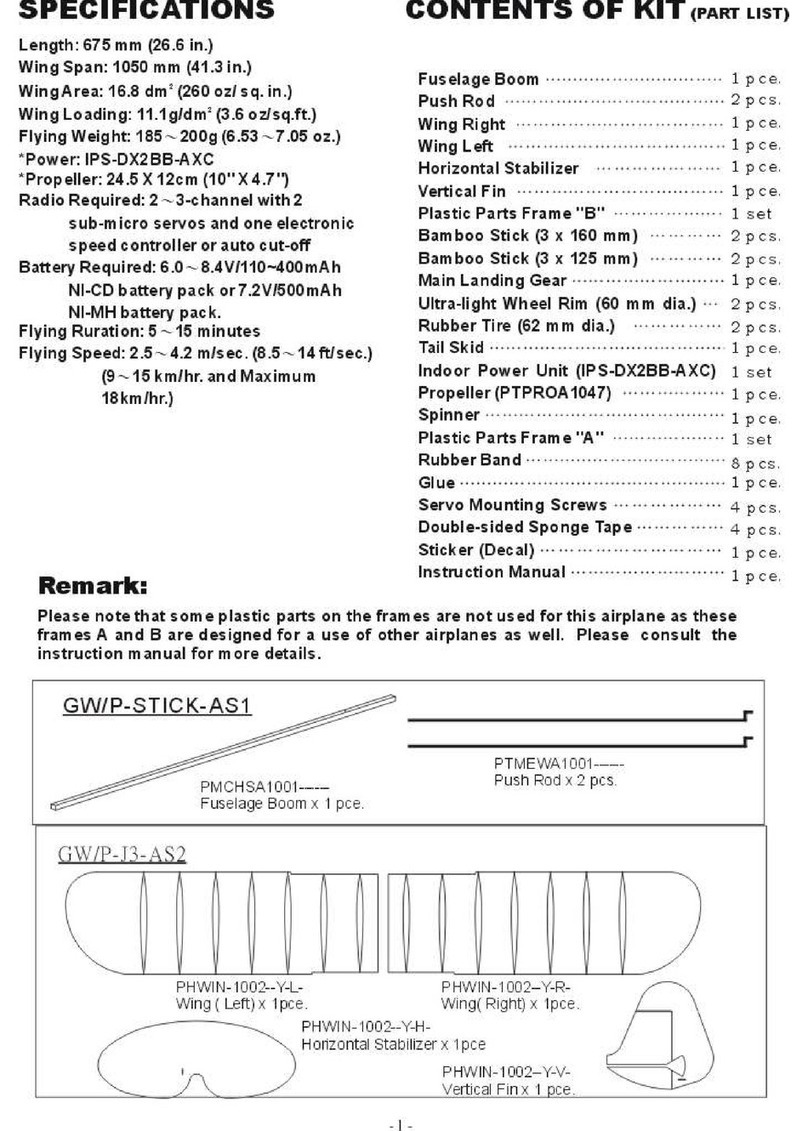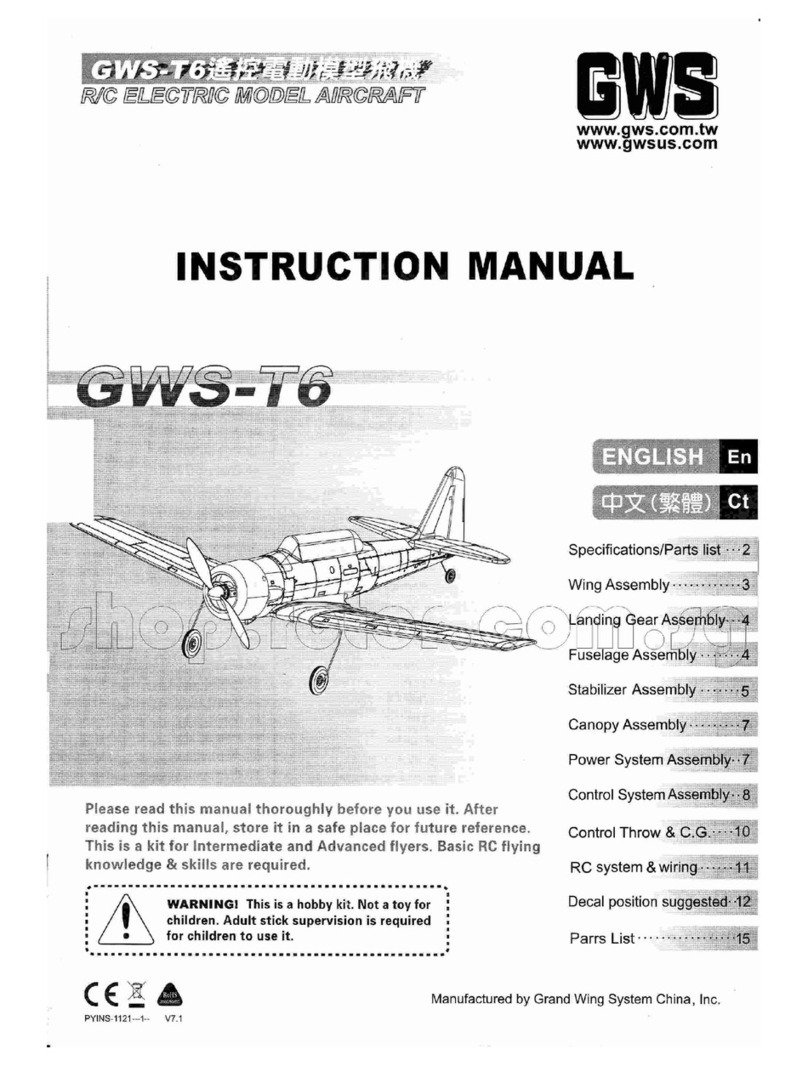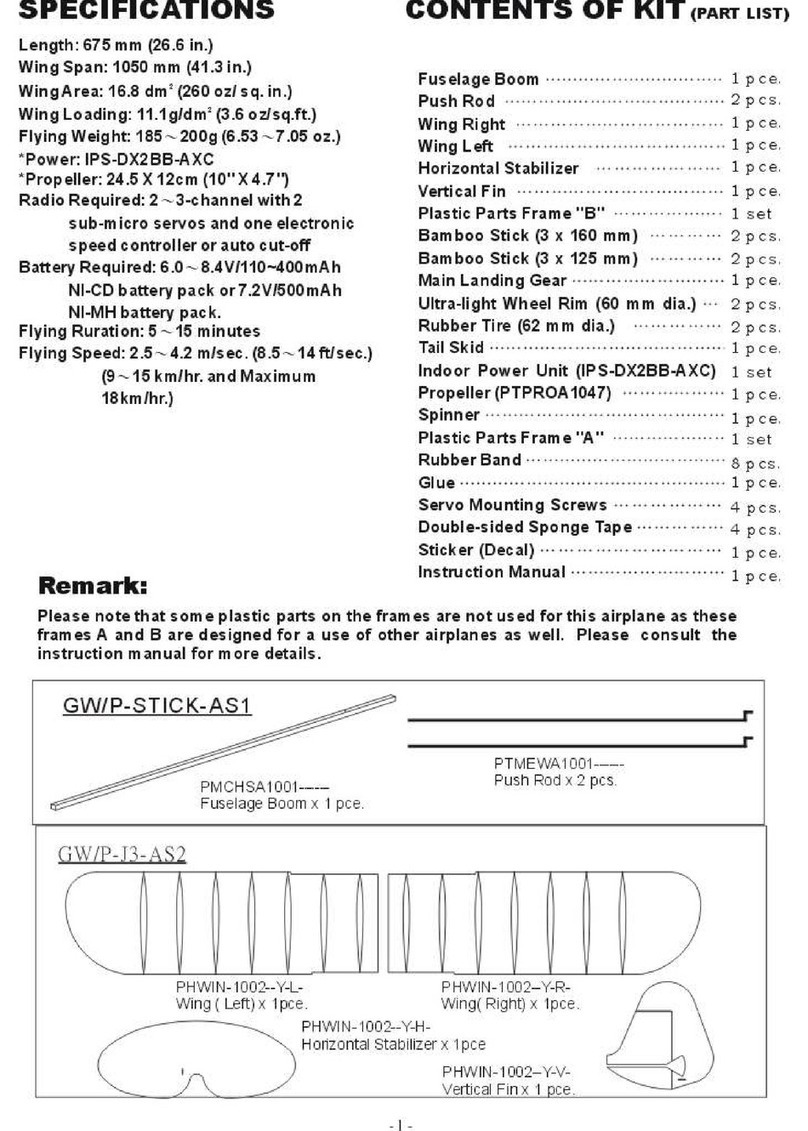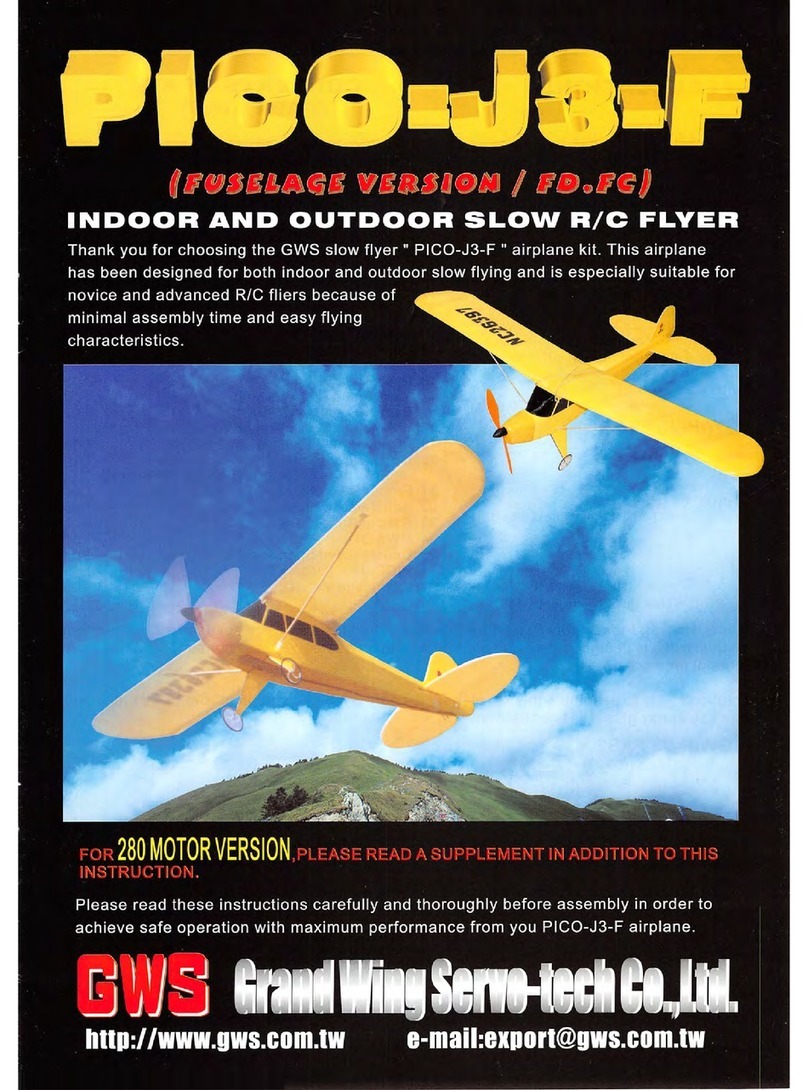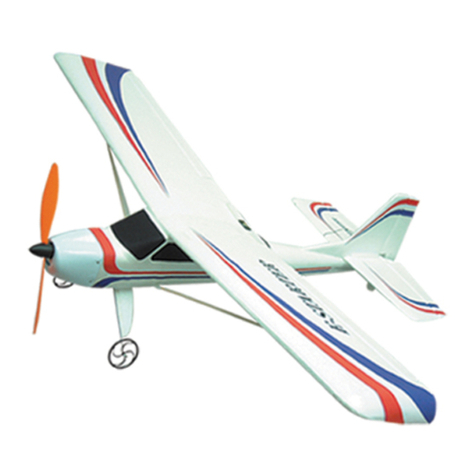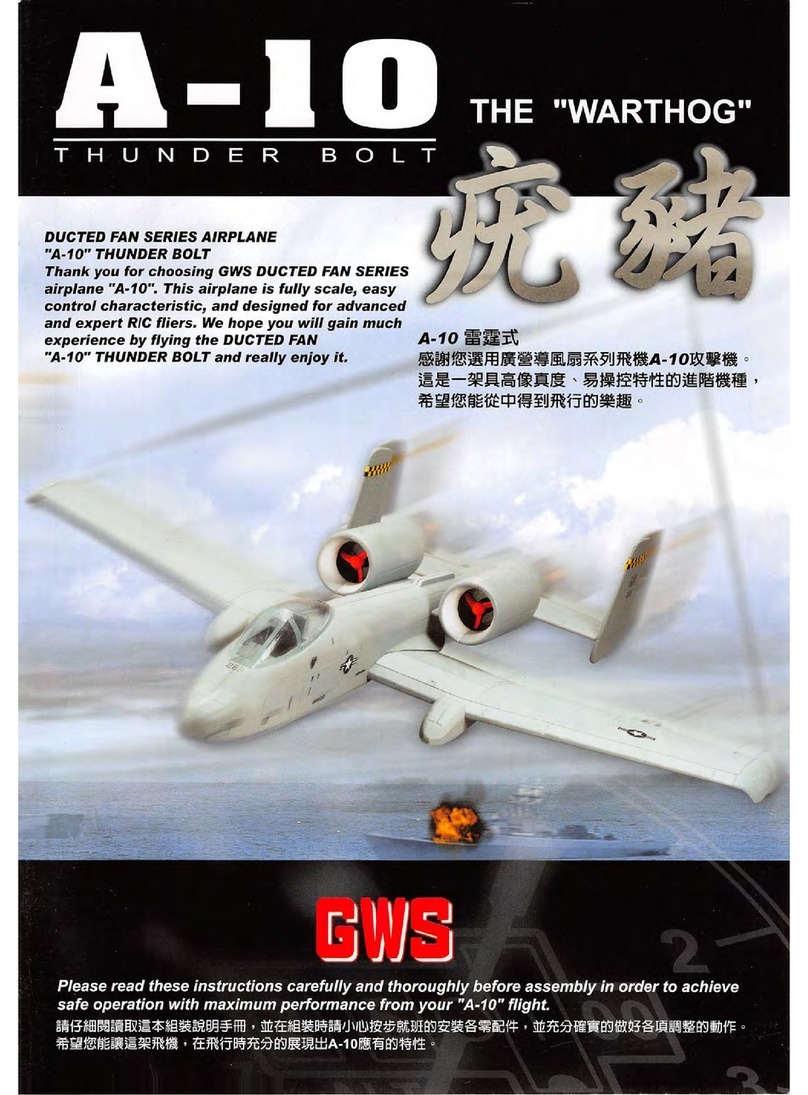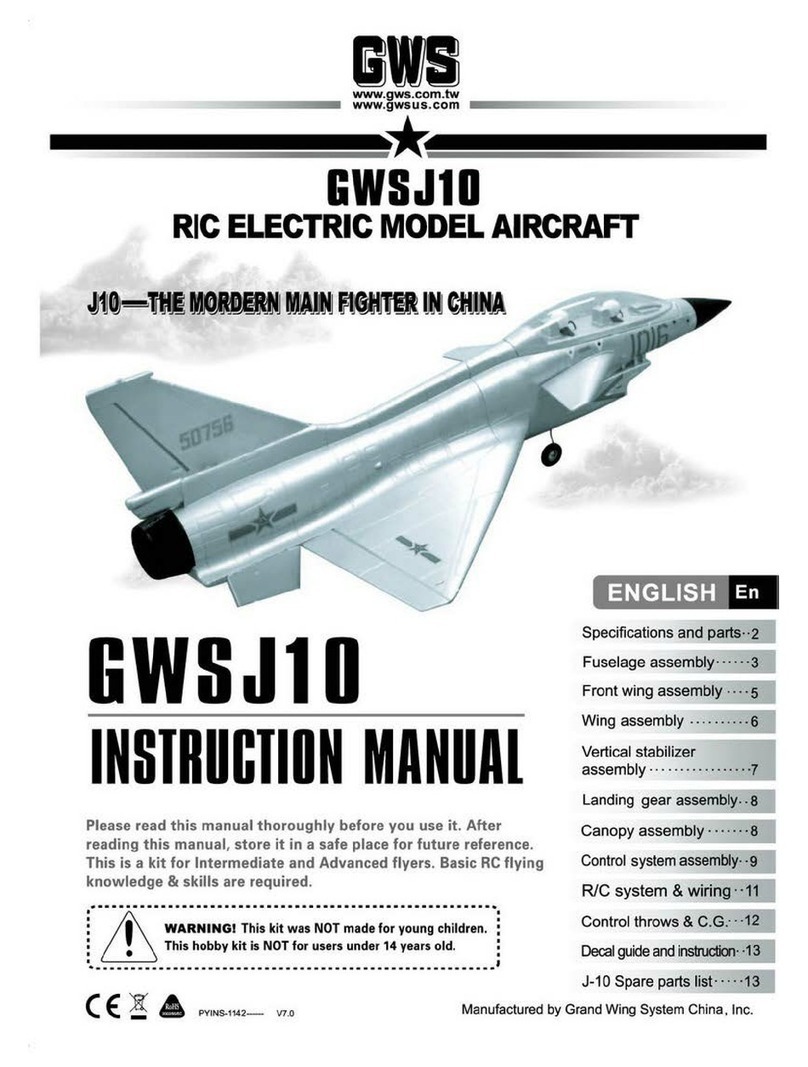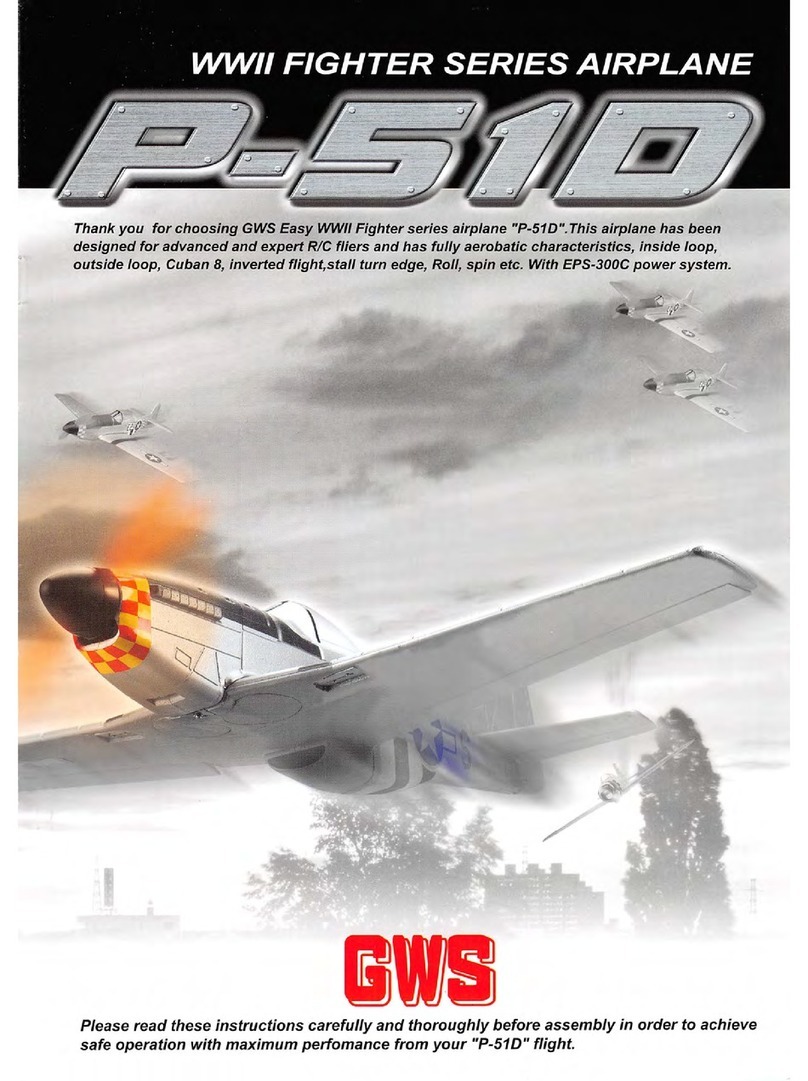^mmmm
R/C
ELECTRIC
AIRCRAFT
SPECIFICATIONS
s
ii
7u
GW/3D>TM-EPS350C/Y
Length
Wing
Span
Wing
Area
Flying
Weight
Wing Loading
Power
System
(
(Si^)
i^mm)
M)
i)
: 676 mm (26.6 in)
:
800
mm
(31.5
in)
:26.4dm2(409.2 sq.in)
:
320-420
g(11.3-14.8 oz)
:12.1-15.9 g/dm2(4-5.2oz/sq.ft)
;
GW/EPS-350/DS
Propeller
Battery Required
Servo
Receiver
Speed
Controller
Radio
Required
USER'S
GUIDE
EP1147
8N750mAh(NI-MH)
above
1^±
PICO/NARO
R6NII
ICS-300
above
4channel radio
(4iJff£(±:2JSS)
f\rr
ly^iT/DADve
•
ieT\
wwiv
• I u m I • f
01. TM350 Fuselage(Left Side) Xl 13. Cowling Mount ABS(1x8x8mm)x4PCS
xl
24.
Rubber
Band
x12
02, TM350 Fuselage(Right Side)
Xl
14. Velcro
Fastener
3Gx165mm(A)
xl
25.
PICO
STICK
Control
Horn
xl
03. TM350 Main Wing(Upper)
xl
15. Velcro
Fastener
3GX165mm(B) x1 26. Double
adhesive
Tape
17.5x2Gx1mm(3M)
x4
04. TM350 Main Wing(Lower) x1 16.
Push
Rod 01mm(Rudder)
x1
27. P-TM Cowling(L)Black x1
05.
TM350
Horizontal
Stabilizer
xl
17.
Push
Rod 01mm(Ailerons)
x2
28. P-TM Cowling(R)Black
xl
06.
TM350
Rudder
x1
18. Push Rod 0lmm(Elevator) x1 29. Fiber
glass
stick 3x48G x1
07.
EPS-350C-D-BB
xl
19.
Push
Rod 01 mm(Upeer&Lower Wings)
x2
30.
3DTM350
Instruction
Manual
xl
08.
Spinner
25mm
xl
2G.
Push
Rod
01.6mm(Nose
Gear) x1
31.
GWS
Decal
x1
09. Propeller
EP1147
x1
21.
Bamboo
Stick
03
x85
x2
32.
P-TM
Decal
xl
10. Ultra-Light
Wheel
Rim
50.8mm(2")x2
21.
Screw
M1.4x9mm
TPA
x10
11. Motor Mount (10x10x90mm)
xl
22. 1Gx18Hige(15 In 1)
x2
12.
Fuselage
Reinforcement (forstrut) x1
23.GWSGIue(24g)
h-.
xl
01.TM350
5mS(L)
x1
E
It
Ka
w
13. ABS(1x8x8mm)x4PCS x1 24.
«SS5
x12
02.TM350
M«#(R)
x1
14.
i5JD?e
30x165mm(A)
x1
25. PICO
STICKSB^il@(gi0@)
x1
03.
TM350
iii(J:)
x1
15. 30X165mm(B) x1 26. a@;li§^17.5x2Gx1mm(3M)
x4
04.
TM350
SH(T)
x1 16.SBPIg lmm(75[gSB}iiff)
x1
27.
P-TMa3ita(L)^
xl
05.
TM350
7j<ipSII
x1
M.mum
immdysjut?)
x2
28.
P-TM^3rt3(R)^
xl
06.TM350
SSSM
x1
18.
IB#®
1mm(?freSff)
x1
29.
3x480
xl
07.
EPS-350C-D-BB
xl
imm(iji?±Tatf)
x2
30.
3DTM350i^aia
xl
08.^31®
25mm
x1
2G.
giP®
1.6mm(i®IB)
xl
SI.GWSMSft
xl
09.ISIISSI
EP1147
xl
21.1(I^$3x85
x2
32.
P-TMlfii®
xl
50.8mm(2")
x2
21.
Ml
.4x9mm
TPA
x10
11.07395(10x10x90mm)
x1
22. 1Gx185SM^n(15Sl)
x2
x1
23.
«Sg!P(24g)
x1
OOl
7031-
7031'
PYPOP-1016
P-TM Decal
Bfiilft
0ARAA0A
swsctmtw
Sin
- 1 -
PYPOP-1003
GWS
Decal
MME
PYINS-1025—C-
3DTM350tS9ia








